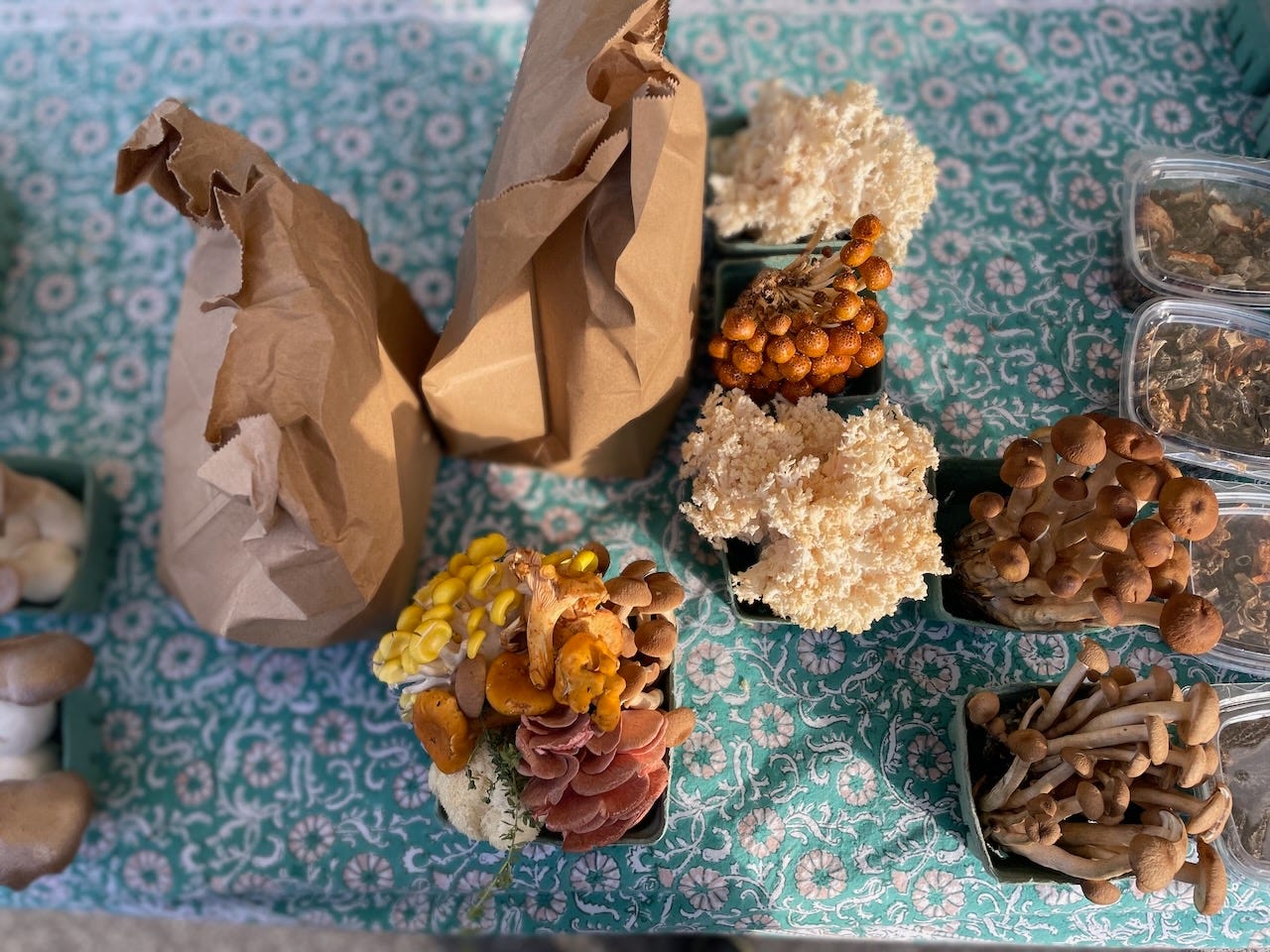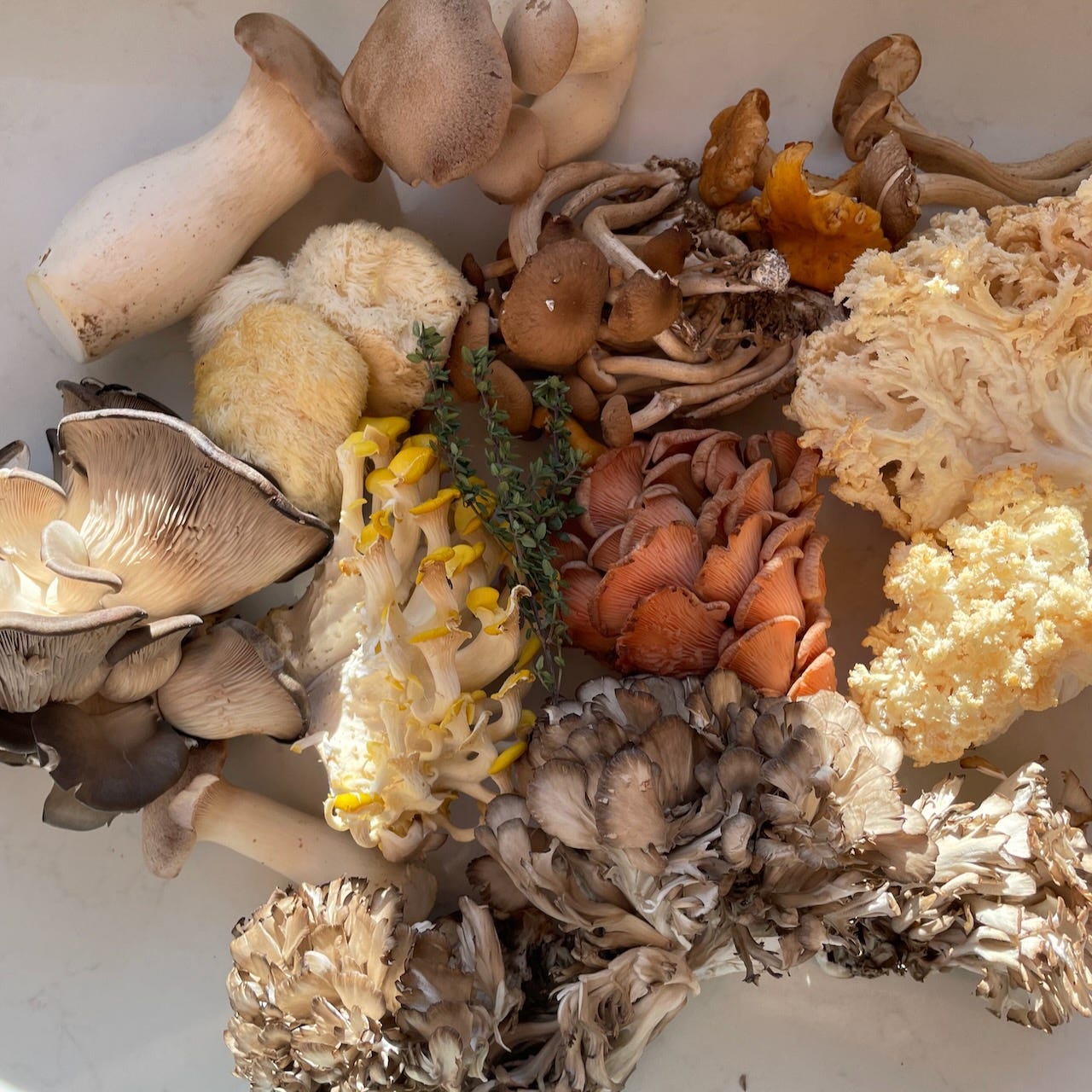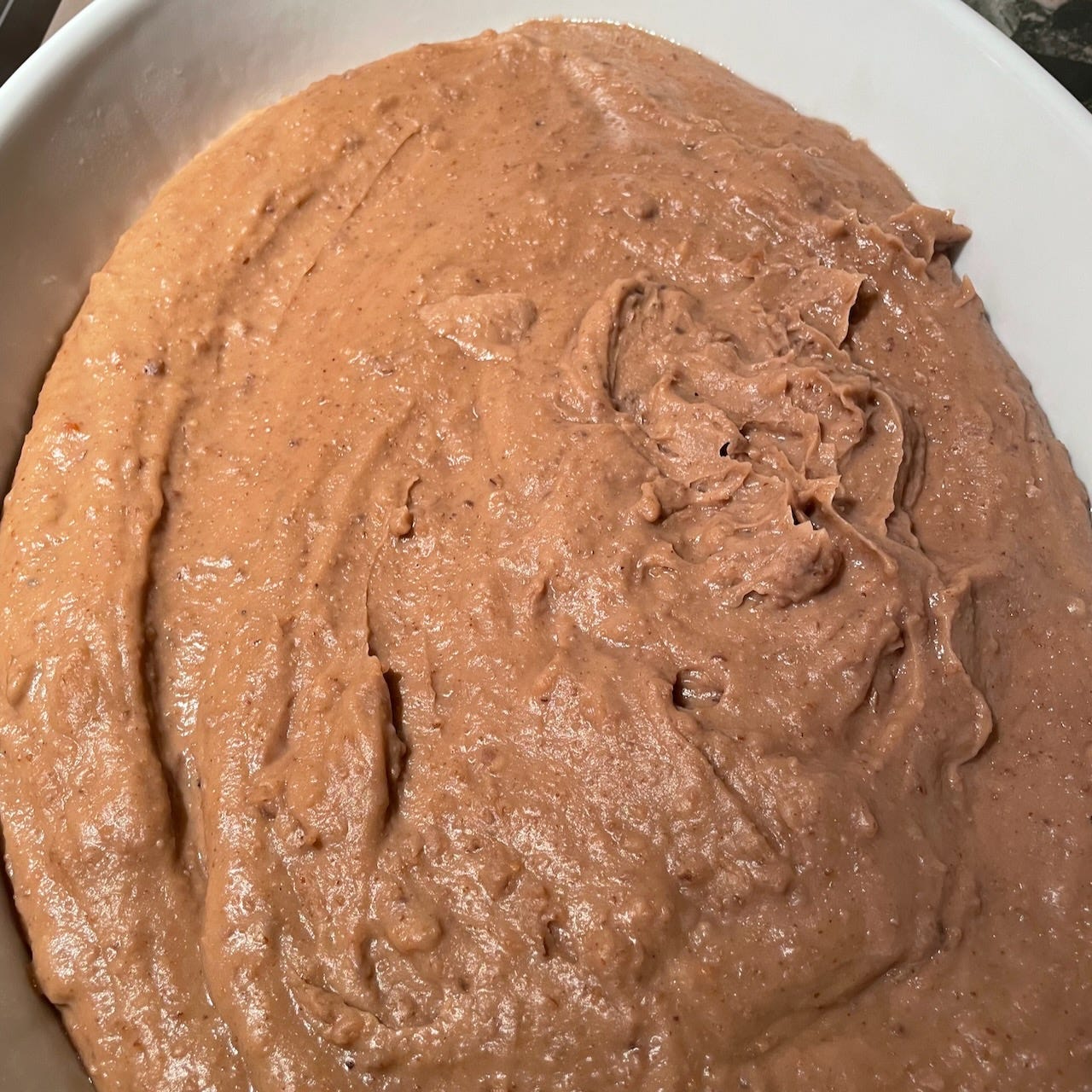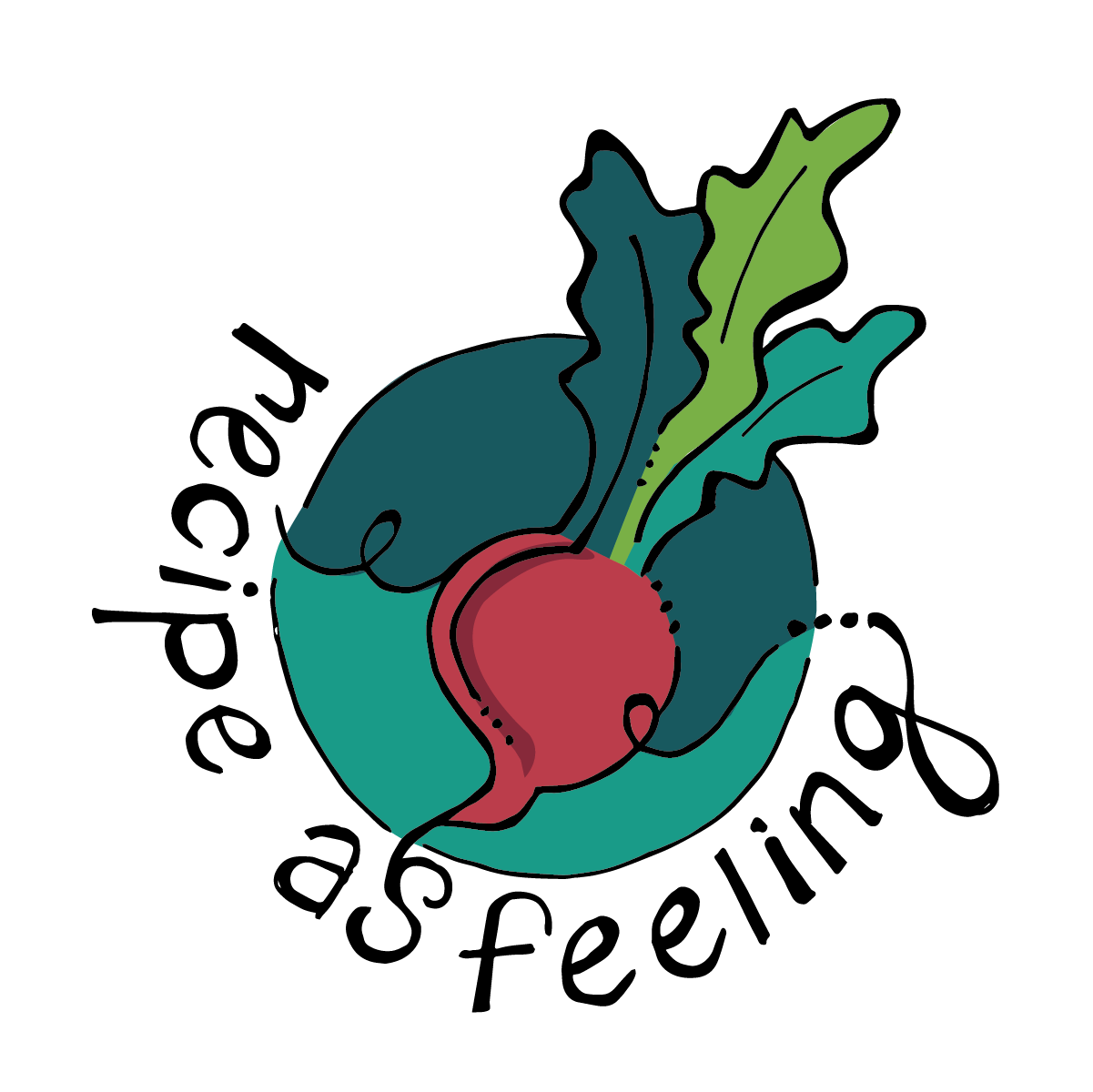I stepped out of my car in the parking lot of the Irvington Farmers’ Market and paused before entering the fray. I turned towards the sun, feeling its warmth cut through the frigid November air. A flutter caught my eye. A $20 bill caught in the breeze, with no one seeming to chase it. I’ve been finding money at my feet with some frequency, a quarter here, a dollar there, just being present seeming to yield its own reward.
I pocketed the $20 and headed straight for Tivoli Mushrooms’ tent, ready to reinvest my windfall. Pink lobsters, yellow tree oysters, fuzzy white lion’s mane, and a few honey-colored chanterelles glowed up from their little basket. Next to them, pioppinos’ brown lollipop heads and tough stems called to me, along with a spongy coral-looking creature I hadn’t seen before. “Coraltooth,” said Craig, gently placing the mushrooms in paper bags. The total came to $71, a fortune I was happy to pay for a feast.
I made this dish for last year’s Thanksgiving, so the pricetag was not a surprise. I knew exactly how I would prepare the mushrooms: Roasted with clusters carefully intact, arrayed on top of a silky chestnut purée, sprinkled with herbs and orange zest. The dish was a hit as a vegetarian entrée that my sister who can’t eat dairy and sister-in-law who can’t have gluten could also enjoy. They weren’t the only ones who loved the dish – it was scraped clean by the omnivores at the table too.
I cooked in stages. First, the purée. I bought pre-cooked chestnuts ($12 per jar) and roasted them in sesame oil and salt, then blitzed them in the food processor with broth made from dried mushrooms. I stopped when the mixture felt like play-doh and packed it up to finish on the stovetop before the meal. I washed, dried, and chopped the herbs, put them in a deli container so that when we arrived at my parents’ house, they’d be ready to go. All I’d need to do the day of Thanksgiving was roast the mushrooms, heat and thin the purée, and put it all together in a pretty dish.
This Thanksgiving was a little different from previous years. We always do a potluck, with all my siblings bringing dishes to my parents’ house, but this year my mom was recovering from surgery and my dad was taking care of her, so we all stepped up even more to make the day special for them and for each other. My sister-in-law Bonnie and I arranged flowers and set the table around a magical tablescape she built, a fairy house of moss and root vegetables and golden flickering lights. My husband took the lead in the kitchen, roasting the turkey to perfection that my sister sourced from a local farm, and directing everyone what to do when. He finished the purée, whisking in apple cider and water until it shined. The mushrooms I placed on top, arranging each unique shape like a fan of peacock feathers.
The luxury of this dish is its texture and the depth of its simple flavors. It’s a dish that asks for your presence, each bite a little different. It invites a question: What if luxury is not a good whose worth comes from its scarcity, some elite value, but from being part of something with your full presence? Mushrooms, after all, grow free, the fruiting bodies of mycelium that plumb the forest floor. The labor of Tivoli Mushrooms farmers and foragers, of course, is not free, hence the $71 pricetag. But in essence, mushrooms just ask you to notice them, willing to share their gifts if you can spot their value like a $20 bill fluttering in the wind.
With all our distractions and stress, presence may feel rare, but it’s free. It has the potential to be an abundant resource we all can cultivate and contribute to each other. I felt it as we sat down to the table together, the labor of cooking done. My dad, having other things on his mind, asked me to give the toast, and I was a little nervous. I calmed as I welcomed everyone, thanked them for bringing their gifts to the table. “The connection this food brings us, to the land and to each other, offers the potential to transform us, not just in this moment but when we go on with our lives,” I said, my eyes making contact with my son. What a luxury, I thought, as we clinked glasses and paused, the feast all ready before us.
Recipe as feeling: Luxury (Mushroom roast with chestnut purée)
Be with all the colors.
Deepen the flavor.
Whisk it smooth.
Compose your feast.
Actual recipe
Roasted mushrooms with chestnut purée
Serves 12
INGREDIENTS:
All the mushrooms you can afford, a mix of varieties
Several bunches fresh herbs (rosemary, thyme, sage, marjoram, parsley all work well)
Zest of 1 orange (preferably organic/unwaxed)
½ cup dried mushrooms
2 jars or packages of peeled, pre-cooked chestnuts
A few tbs. sesame oil (good quality such as La Tourangelle)
Grapeseed oil
Flaky sea salt
1 cup apple cider
Water
EQUIPMENT:
Food processor or blender
2 rimmed roasting pans
Parchment paper or foil
Large saucepan
Casserole dish or platter with raised sides for serving
First, make the purée (you can do this up to a few days in advance). Preheat the oven to 425° F. Toss the pre-cooked chestnuts in sesame oil and a sprinkle of sea salt. Roast on parchment-lined sheet pans for 15 minutes (they’re already cooked so you just want to brown them a bit – you could use fresh chestnuts but that’s a lot more work and challenge to peel, and the pre-cooked ones work fine). Let the chestnuts cool.
Meanwhile, boil 2 cups water and pour over the dried mushrooms. Wash your herbs by submerging them in a large bowl of cold water. Lift them out and place them on a kitchen towel to dry. When they’re fully dry, chop them and set aside or package in an airtight container.
When the chestnuts and mushroom broth are cool, purée them in the food processor, adding more water and a bit of grapeseed oil to get to a consistency that’s like play-doh – it sticks to itself. (You’ll thin it further on the stovetop.) At this point, you can pack it in an airtight container until you’re ready to continue cooking, or just keep going if you’re making this dish the same day you are eating it.
If your oven is cold, preheat it again to 425° F. Carefully coat the mushrooms in grapeseed oil and sea salt, keeping clusters intact as much as possible. If you have large thick mushrooms like king oysters, slice them lengthwise into ¼-inch slabs. Line 2 rimmed baking sheets with parchment and place the mushrooms on the sheets with enough space between them that they can brown and not steam. Roast until they are browned and crispy – cooking time will vary a lot based on the water content of your mushrooms but check on them after 20 minutes and keep going until they are done. (You can do this earlier in the day if you want; keep them on the pans to cool and reheat before serving.)
While the mushrooms are roasting, thin the purée by heating the chestnut mixture in a saucepan and whisking in apple cider and water at a 1:2 ratio until it’s the consistency that’s thinner than peanut butter but still has some form to it, like runny mashed potatoes. Taste for salt and adjust as needed.
To serve, layer the purée into a serving dish with raised sides, then place the warm crispy mushroom clusters on top so that you can see the shape of each cluster or type of mushroom. Sprinkle the herbs and orange zest on top and serve with a large spoon.
Hungry for more? Check out my new newsletter, Your Soul’s Pantry: Frameworks for building from the heart, with a special 20% discount when you subscribe through this link.











